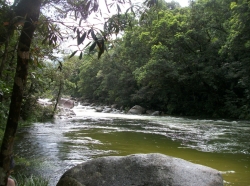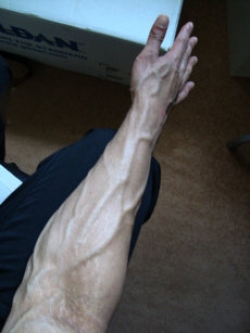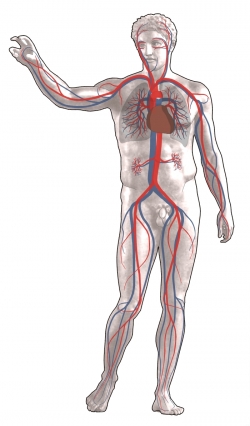Have you ever gone swimming on a hot day in the summer? Maybe you enjoyed an afternoon cooling off while floating in a pool, or splashing in the waves in the ocean. If you ever have gone swimming in a river, then you may have noticed that the water only flows one way and that swimming against this flow can be very hard.

Rivers move water around the earth.
Photnart, CC BY-SA 3.0 , via Wikimedia Commons
Your blood flows in your body just like the way water flows in rivers. The circulatory system works to make sure that your blood gets to all of the parts of your body. This system is important because blood carries oxygen and nutrients. Your heart gives the power the blood needs to be carried through your whole body.
Of course your heart needs a way to get that blood to all your organs. This is the job of blood vessels.
Blood vessels are the passageways for blood to be carried all over your body. You can remember this by knowing that a vessel is an object that carries something. Therefore, a "blood vessel" is something that carries blood.
Your heart and blood vessels work together to pump blood throughout your body. Think of your heart as being like a powerful water gun. Just like a water gun takes water in and shoots it out, your blood vessels carry blood to and from your heart. Blood vessels make a way for your blood to be carried all over your body.
There are three types of blood vessels. One type of blood vessel is called an artery.
Arteries are blood vessels that carry your blood away from your heart and to all of your other organs. Imagine you shot a water gun full of water into a river. The river would carry the water away from you. Think of arteries as being the rivers that carry water away from the water gun. To help yourself remember which direction arteries carry blood, think of them as "outeries" because they carry blood out of your heart.
Another type of blood vessel is called a vein.
Veins are the blood vessels that carry blood back to your heart. Imagine that you put that water gun back into a river that was flowing towards you. The water would flow back into the water gun, just like blood from veins flows back into your heart. If you look at your hands or feet, you might be able to see blue or purple lines beneath your skin. These lines are veins. Both arteries and veins have thick walls because they are mostly used to carry the blood all over your body.

If this gets any worse I'm afraid they're going to pop.
Taleb247, CC0, via Wikimedia Commons
The third type of blood vessel helps move the important things in your blood into the organs and other body parts that need them. This kind of blood vessel is called a capillary.
Capillaries are blood vessels with thin walls where the exchange of food and oxygen or carbon dioxide and wastes can happen. Think of capillaries as small streams where some of the water is soaked into the soil around the stream.
So how do all of these blood vessels work together? Well, the blood that is pumped out of your heart is carried through your arteries to the rest of your body. In most cases, this blood has oxygen in it that is needed by your organs. Then the blood goes through your capillaries, where it transfers what it is carrying to your organs and picks up any waste. As the blood leaves your capillaries, it goes through your veins to get back to your heart, and everything happens all over again.

The blood goes round and round and up and down.
User:Sansculotte, CC BY-SA 2.5 , via Wikimedia Commons